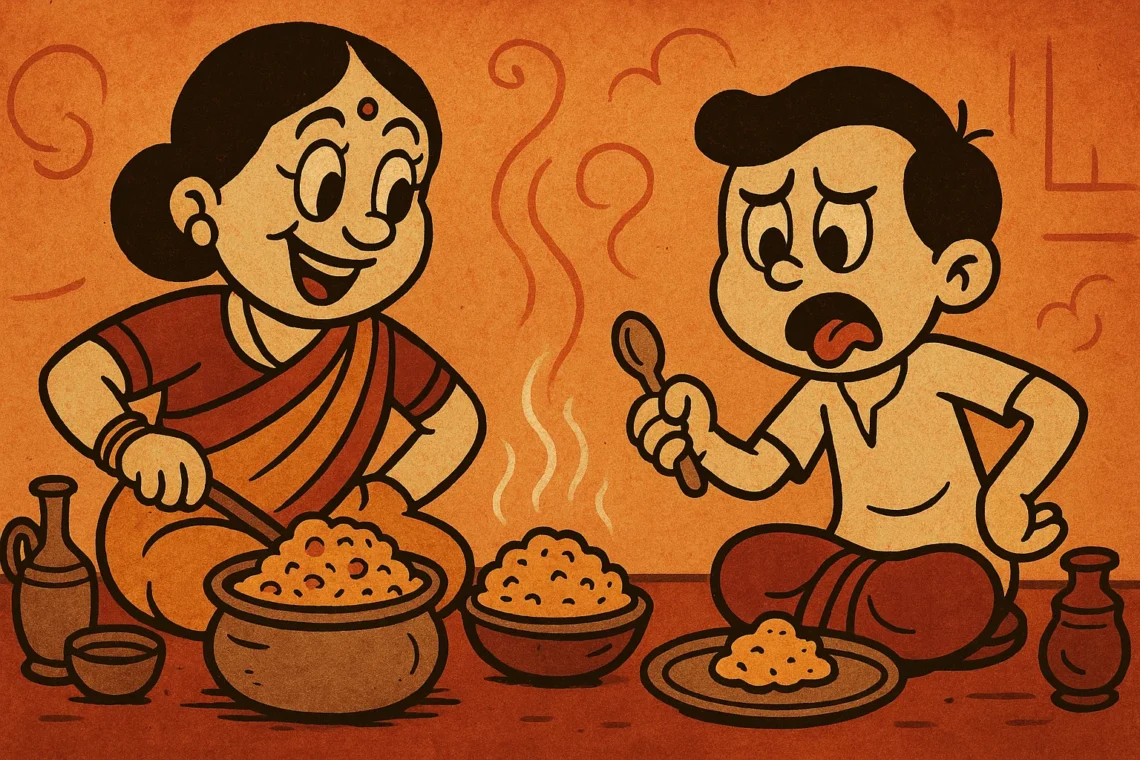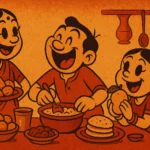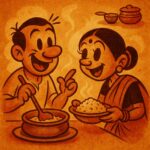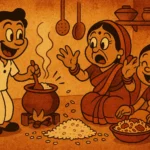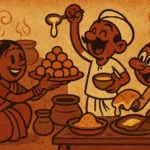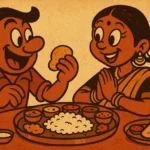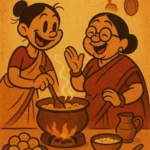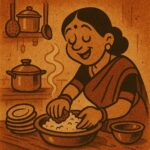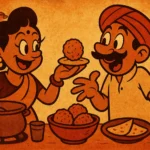Khichdi isn’t supposed to be complicated. That’s kind of the point. It’s the food of recovery days and rainy evenings. The dish you eat when you’re too tired to cook or too sad to chew. Lentils, rice, a bit of turmeric, maybe a few vegetables if someone’s feeling generous. It’s not meant to impress—just to hold you. And yet, every time I make it, I’m chasing something impossible: the way my mom’s khichdi tasted when I was a child.
Mine isn’t bad. I follow her instructions—equal parts moong dal and rice, a little ghee, pressure cook until soft. I even use the same brand of hing she swears by. But still, it’s not the same. My khichdi tastes like food. Hers tasted like being cared for without having to ask.
Her Khichdi Had Silence
When I was sick, she’d make it with less salt, more ghee. When I was anxious, she’d add a spoon of dahi on the side and not say a word. On monsoon evenings, she’d crush papad into it and serve it steaming, the kind of warm that didn’t just reach your stomach—it reached whatever part of you needed to feel safe.
I never saw her measure anything. She never set timers. She stirred like she was thinking about something else, and the khichdi somehow knew when to be ready. The tadka came last, a quiet hiss of cumin and ginger in ghee, poured over the top like punctuation. Not dramatic. Just final.
My Version Tries Too Hard
In my kitchen, khichdi gets made with effort. I Google the water ratio, double check the dal, try to replicate the “soft but not too mushy” texture she somehow conjured without thought. Mine ends up too thick, or too runny, or tastes slightly off—even when I’ve done everything “right.” And every time, I take the first bite and feel a small pang. It’s not bad. But it’s not hers.
Maybe it’s the vessel. Hers was always made in that slightly dented pressure cooker that hissed like it knew our moods. Mine is a sleek electric one that beeps cheerily. Maybe it’s the rice. Maybe it’s the salt. Maybe it’s something you can’t buy or measure or replicate. Maybe it’s just memory, messing with my taste buds.
The Secret Ingredient
I once asked her what made hers taste better. She smiled and said, “Because I was cooking it for you.” That’s when it hit me. Her khichdi wasn’t about technique. It was an emotion disguised as food. It was her way of showing love without smothering. A way of saying, “I know you don’t feel great, and that’s okay. Eat this.”
She never called it comfort food. She never needed to. It was comfort. No label necessary. When I make it for myself now, it carries some of that warmth—but filtered, translated, once removed. It’s not love handed to you. It’s love you’re trying to recreate. Which is harder.
Still Worth Making
I still make it. On tired days. On lonely evenings. When the fridge is full but nothing calls to me. I scoop it into a bowl, add a spoon of ghee, and sit quietly. And somewhere in the steam, I smell her kitchen. Not all the way. But enough. Enough to remind me that even if I can’t match her flavor, I can match her intention.
And maybe that’s the point. Her khichdi held me when I couldn’t hold myself. Mine tries to do the same. Even if it fails a little, it’s still an act of care. Still a way of saying: I’m here. I’m trying. And I learned this from her.
Her khichdi healed me. Mine keeps me company. And maybe that’s enough.
Born in Mumbai, now stir-frying feelings in Texas. Writes about food, memory, and the messy magic in between — mostly to stay hungry, sometimes just to stay sane.

